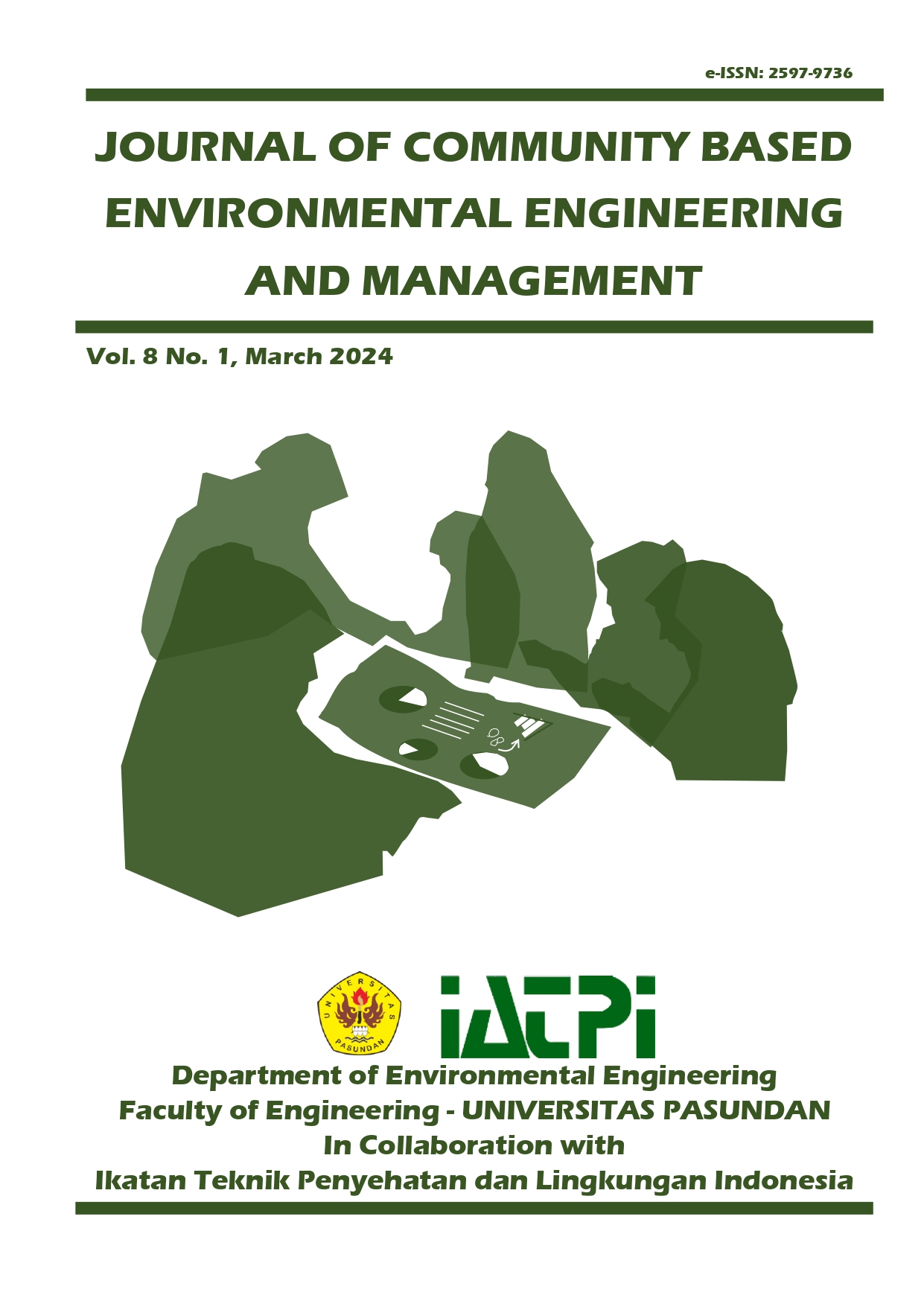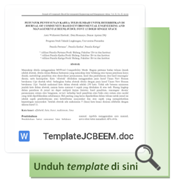Waste Generation and Composition in Karawang Regency
DOI:
https://doi.org/10.23969/jcbeem.v8i1.12620Keywords:
Solid waste, Waste composition, Waste generation, Karawang RegencyAbstract
Sources of waste in Karawang Regency come from various activities of residents who are concentrated in locations such as residential, commercial, social facilities and public facilities. Each source of waste has characteristics for the generation, composition and characteristics of the resulting waste. In general, the source of waste is divided into household (domestic) and non-household (non-domestic). It is known that the generation of waste for the domestic sector of households is 2.93 L/person/day or 0.42 Kg/person/ day. But when viewed from the economic level, high income housing has the highest generation of 3.27 L/person/day. This is because differences in economic level and lifestyle affect the consumption level of the residents of the House. The higher the level of community life, the greater the waste generation. Based on the calculation results, it is known that the value of waste generation of each facility is different. This is because each facility has different activities. Shops have the highest generation of 3.78 L/person/day, followed by markets and roads as much as 1.55 L/m2/day and 1.12 L/ m2/day. This indicates that the activity of the store produces more waste than the market and the street. When reviewing the waste generation of Karawang Regency, the generation is greater than the domestic sector alone. The result of one area of Karawang Regency showed the waste generation is 0.56 Kg/person/day or 4.06 L/person/day.
Downloads
References
Abubakar, I. R. (2017). Household Response to Inadequate Sewerage and Garbage Collection Services in Abuja, Nigeria. Journal of Environmental and Public Health, 2017, 1–11. https://doi.org/10.1155/2017/5314840
Adisanjaya, N., Kadek, N. and Lestari, D. (2018). Studi Timbulan Sampah dan Peran Serta Masyarakat dalam Mendukung Konsep Banjar Pintar Berbasiskan Lingkungan (Studi Kasus: Desa Belatungan Kabupaten Tabanan Bali) J. Media Sains, 2(2): 104-112
Hidayah, E.N., Maulana, A.A., Cahyonugroho, O.H. (2021). Sosialisai Pengelolaan Sampah Kertas, Plastik dan Logam Melalui Bank Sampah di Kawasan Perumahan. Selaprang: Jurnal Pengabdian Masyarakat Berkemajuan, 4(2): 108-112. DOI: https://doi.org/10.31764/jpmb.v4i2.3347
Kiswandayani A.T, Susnawati I.D, Wirosoedarmo, Ruslan. (2016). Waste Composition and Potential Greenhouse Gas Emissions in Domestic Waste Management: Case Study of Winongo Landfill, Madiun City. Journal of Natural Resources and Environment, 2(3):9-17
Rachman, I., Yustiani, Y.M., Raharjo, S., and Matsumoto, T. (2016). Analysis on the appropriate model of a community-based management (Case of rural area in Karang Joang Village, Balikpapan). International Journal of Waste Resources, 6(4): 34-38.
Setiawan, Y., Nugroho, S. and Saputri, A.D.C.D. (2022). Analisis Timbulan Sampah Perumahan Kecamatan Muara Badak, Dihubungkan dengan Tingkat Pendidikan, Pendapatan, dan Perilaku Masyarakat. Jurnal Teknologi Lingkungan, Universitas Mulawarman, 6(1): 44-48. DOI: http://dx.doi.org/10.30872/jtlunmul.v6i1.8478
SNI 19-3964-1994. (1994). Methods for collecting and measuring samples of urban waste generation and composition. National Standardization Agency, BSN.
Sumantri, R. A. G. I., Pandebesi, E. S. (2015). Potensi Daur Ulang dan Partisipasi Masyarakat dalam Pengelolaan Sampah di Kecamatan Jabon, Kabupaten Sidoarjo. Tek. ITS, 4(1): 11-15. Doi: https://10.12962/j23373539.v4i1.8820
Yustiani, Y.M., Rochaeni, A., Aulia, E. (2019). Konsep Pengelolaan Sampah di Desa Babakan Kabupaten Bandung. Enviroscienteae, 15(1): 121-126. DOI: https://10.20527/es.v15i1.6332
Yustiani, Y.M. and Abror, D.F. (2019). Pengelolaan Bank Sampah Unit dalam Pengelolaan Sampah Perkotaan. Jurnalis, 2(2): 82-89.














